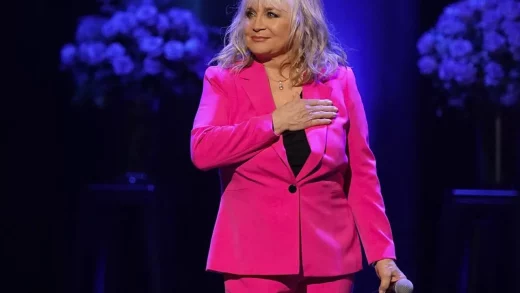Connecting with Older Clients: Expert Insights

Working with older clients is about understanding their unique needs, building trust and creating a supportive and empowering environment for them to thrive in their fitness journey. In this blog, two long-time ACE employees answer questions about how to develop strong and lasting connections with older clients and make an impact on the health and wellness of this growing population.
Anthony Wall, MS, is the Senior Director, Global Business Management for ACE and has more than 25 years of experience in the fitness industry. On February 14, 2024, Anthony will be leading a FREE webinar entitled The Science of Programming for Older Adults—use this link to learn more and reserve your spot now! In that webinar, he will explore the general physiological characteristics of aging and strategies for programming exercise for older adults.
Sabrena Jo, PhD, is the Senior Director of Science and Research for ACE and has been actively involved in the fitness industry since 1987.
Let’s dive in…
Are there any strategies you can share for navigating the first few sessions with an older client? Do you approach things differently than you might with a younger client?
Anthony:
Establish Trust: When working with the older adult population, establishing trust is critical. While this isn’t that different from when working with younger clients, older adults may value this more. When working with this population, I make a point to pay close attention to their interests.
Check Your Biases: I also make sure to consider any biases I might have before I have the session. One thing I have noticed with older clients is that many of them pick up on these things more, so being honest and authentic is always the best approach. If you don’t know something, let them know you don’t know.
Sabrena:
Approach with Empathy and Curiosity: Older clients often have different physical capabilities and health considerations. It’s crucial to start with a comprehensive assessment of their health history, physical capabilities and goals. I prioritize establishing a comfortable environment by encouraging open communication and setting realistic expectations. Importantly, I never assume that a person’s age means that they will have a certain set of goals or needs. In the literature, an “older adult” is often defined as someone in their 50s or older. Therefore, a client in their 50s would most likely have significantly different goals than a client who is 80, yet they are both considered older adults.
Adaptability: Like I do with all clients, regardless of age, ensure exercises are tailored to their ability level, focusing on strength, stability and mobility. I also explain the importance of recovery, making a point to highlight aging’s effect on the body’s ability to build and heal after an exercise session. For example, a weekly workout resistance training plan must include adequate time to lapse (e.g., at least one or two days between sessions) before working the same muscle groups successively.
Because many older clients have goals focused more on health and overall wellness than enhancing fitness or performance, how do you explain the purpose of exercises in a way that connects to those goals and empowers or inspires them to work hard?
Anthony:
Personalized Programming: In general terms, some older clients may be more interested in health and “feeling better” than younger clients. For this reason, understanding how exercises can help is important. For example, a series of movements might be used to elevate heart rate. The goal in this example is less about the specific exercises and more about eliciting a heart-rate response. This is different from choosing a series of exercises that are designed to help improve shoulder mobility, for example. The key (as with any client) is to understand what the primary goal is, and then use different exercises and movements to accomplish that goal.
Develop Client Confidence and Rapport: Choosing exercises that have a secondary impact can also add value. For example, marching in place can be used to increase heart rate while also addressing balance, so this could be a better choice than simply walking. Designing the workout using exercises that address client goals while also building the confidence of the client helps establish and maintain rapport.
Sabrena:
Relate to Daily Life: I explain exercises in the context of improving daily activities, such as carrying groceries, climbing stairs or playing with grandchildren. This approach helps clients see the direct benefits of their efforts.
Empowerment through Education: Educating clients on how specific exercises contribute to reducing the risk of falls, improving bone density and enhancing mental health and well–being is also helpful. This knowledge often serves as a meaningful incentive for sticking with the program.
Can you share a few tips for how younger professionals can build rapport with older clients?
Anthony:
Listen and Learn: When I started out as a personal trainer, I was always worried that I would find it hard to build rapport with my older clients. I found that like all of us, older clients love to talk about their lives. Families, places and pets were my favorite topics to talk to them about. I would often ask about what life was like when they were my age. Over the years, I’ve come to see that our older adult population can teach us a lot about appreciating and enjoying life.
Sabrena:
Show Genuine Interest: Take the time to learn about clients’ life experiences and interests. This shows respect and helps bridge the age gap.
Consistency and Reliability: Be consistent in your approach and reliable in your scheduling. Clients appreciate a professional who they can trust and on whom they can depend.
Use Appropriate Communication: Be mindful of the language and tone used. Avoid overly technical jargon and ensure your instructions are clear and easy to understand, while also being sure not to “talk down” to older clientele.
Are there any myths about older adult clients that you’d like to dispel?
Anthony:
Older Adults Are Not All the Same: One of the things I talk about in my presentations is that as people age, they become more unique. Older adults have a wealth of life experiences. So, the first assumption is that older adults are all the same.
Many Older Adults Use Technology: Another common myth is that older adults are not very proficient with technology. The truth is, they may simply use technology differently than younger clients, but assuming older clients can’t use computers or smartphones is a mistake.
Age Does Not Equal Frailty: The last myth about older adults that I’d like to highlight is that older adults are frail or deconditioned. While there is a decline in fitness as we age, it is specific to where someone started. Some people in their 70s are as healthy as an average 30 or 40 year old.
Sabrena:
Age is Not a Limitation: One common myth is that older adults are too frail for exercise. In reality, they can benefit greatly from appropriately designed exercise programs.
Capability for Improvement: Another myth is that older adults cannot improve their physical condition. However, in actuality, they are capable of making significant strength, function and performance gains.
How can a professional ensure that their facility or coaching/training approach is older adult–friendly?
Anthony:
Consider Demographics when Hiring: From a facility perspective, the simplest option is having employees who are in a similar age range as the demographic you want to attract. Everyone wants to fit in somewhere where they might see themselves.
Survey Members and Test Programs: In my previous company, when we created new small-group training programs, we ran a few pilots to trial the program. Ask your trusted clients about their experiences—they are the best people to test new programs to ensure they are applicable.
Sabrena:
Accessibility and Safety: Ensure the facility is easily accessible, with clear signage and minimal hazards that could contribute to tripping and falling (e.g., no loose power cords on the floor and no wet spots in restrooms or drinking fountain areas).
Personalized Approach: Tailor programs to individual needs, considering any chronic conditions or limitations. Provide supervision and coaching support to boost the safety and efficacy of your exercise program, while also enhancing client confidence.
Foster a Welcoming Community: Encourage a social atmosphere where older adults can connect with each other, fostering a sense of community and belonging.


